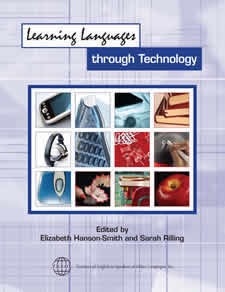The New Ways series is a collection of activities and exercises for classroom practice. Here are two great activities for teaching reading.
Main Ideas
Piecing Together Ideas
|
Levels
Intermediate + |
Aims
Practice reading for main ideas
Develop skill in reading for details |
|
Class Time
20–30 minutes
Preparation Time
No set time |
Resources
Any reading material
Paper
Hat |
Making distinctions between general ideas and supporting details is an important part of reading comprehension. Strip stories are an enjoyable way for students to see the relationship between the bigger and smaller pieces of a text.
Procedure
- Select appropriate reading material for the class.
- Select sentences or paraphrase portions of the reading passage and write them on strips of paper. Prepare a set of corresponding strips that say either “main idea” or “supporting detail.” The two sets of strips must correspond exactly. The total number of strips should equal the number of students in the class.
- As the students read the material, devote class time to enhancing comprehension until the material is well understood.
- Have students
- draw a strip from a hat.
- work together to match the strips with the quotations to the strips with the labels.
- stand in a line (with a strip) in the order that the sentences appeared in the reading passage.
- read out loud, in sequence, what is written on the individual strip.
Caveats and Options
- For a large class, use two sets of strips and have two groups form two different lines simultaneously.
- Make the activity more difficult by requiring any reading material to be put away before the strips are drawn from the hat so students may not refer to it during the exercise.
- It is important to have covered the material well before attempting this activity, but it is a nice way to conclude work on a reading passage.
Contributor
Caroline Crolley is a candidate for an MA in ESL at the University of Hawaii, where she also teaches.
Academic Reading
Clozeline
|
Levels
Intermediate + |
Aims
Improve academic reading comprehension skills by focusing on main and supporting points.
Introduce note-taking skills through outlining |
|
Class Time
30 minutes
Preparation Time
20 minutes |
Resources
A textbook chapter and an outline |
Students must be able to recognize main and supporting ideas in order to understand a text. In turn, they must develop note-taking and outlining skills so that they can review the text later.
Procedure
- Locate a suitable chapter and outline in a textbook.
- Do not make any changes in the first two sections and the last section of the outline.
- Omit the main points of the next two parts of the outline. Leave all of the supporting points as they appear in these sections of the outline.
- Omit about half of the supporting points in another part of the outline. Leave the key point as is in this section.
- Omit all of the supporting points in one or more remaining sections of the outline.
- In class, distribute copies of the reading passage and the cloze outlines. Have students read over the cloze outline before they read the chapter. Ask students to use the cloze outline to help them focus on the main ideas and the key supporting ideas for each section when reading.
- Have students complete the cloze outline.
- Create small groups of students. Each group can discuss their responses to one part of the outline. If the group has time, they can discuss other sections as well.
- Group representatives can report on the main and supporting ideas of each section of the outline to the entire class.
Caveats and Options
- If the textbook chapter does not have an outline, write one for the chapter first and then make it into a cloze outline.
- Instead of working with an outline, prepare a cognitive map of the chapter. Then leave some key or supporting ideas blank in the cognitive map.
- Instead of using an entire textbook chapter, students could read a much shorter passage that is written in textbook style (with clear headings and subheadings). Students then work with an outline or cognitive map as described above.
- If students are shown this exercise before they begin to read, it can give them something to focus on while they are reading. Filling in the outline gaps is best done during or after reading a textbook chapter. Some ESL textbooks include excerpts from textbooks or passages written in textbook style.
Contributors
Ellen Lipp teaches linguistics at California State University at Fresno and directs its ESL program. Debbie Davis is Assistant Director of the ESL program at CSU and also an instructor.
These activities were originally published in New Ways in Teaching Reading (1993), edited by Richard R. Day, published by TESOL.
TC Monthly Giveaway Congratulations to Suzanne Donsky, of Minnesota, USA, for being the winner of the November 2011 TESOL Connections Monthly Giveaway. Out of more than 1,700 entrants, Suzanne won a free TESOL Classroom Practice book set.
This month, give the gift of TESOL!
Click here to enter
TESOL Blogs Check out the latest TESOL Blogs:
|
Hey, Is That a Phone Under Your Desk?, by Korey Marquez
 There’s a lot of emphasis these days on integrating technology into the classroom. ESL instructors are using online forums, language learning applications, e-learning software, websites, and other modern-day tools to help students learn English. But as most of us probably know all too well, sometimes technology interferes in the classroom. I’m talking, of course, about cell phones, iPods, and other tempting devices that lure students away from devoting their full attention to the task at hand. Sometimes during a class I’ll look up and notice that students who I thought were fully engaged are actually sneaking texts and checking email under the cover of their desks. Loud beeps announce the arrival of new messages, and ring tones of every imaginable kind sound off during inopportune times. During computer lab sessions, I find students checking personal email and surfing the web instead of working on class exercises. Read More. There’s a lot of emphasis these days on integrating technology into the classroom. ESL instructors are using online forums, language learning applications, e-learning software, websites, and other modern-day tools to help students learn English. But as most of us probably know all too well, sometimes technology interferes in the classroom. I’m talking, of course, about cell phones, iPods, and other tempting devices that lure students away from devoting their full attention to the task at hand. Sometimes during a class I’ll look up and notice that students who I thought were fully engaged are actually sneaking texts and checking email under the cover of their desks. Loud beeps announce the arrival of new messages, and ring tones of every imaginable kind sound off during inopportune times. During computer lab sessions, I find students checking personal email and surfing the web instead of working on class exercises. Read More.
|
|
CALL Resources on Diigo for Teacher Training, by Sandra Rogers
 Do you Diigo? To be honest, I signed up but never used the online social-bookmarking tool. Fortunately, TESOL’s Computer-assisted Language Learning (CALL) Interest Section has been busy bookmarking some great online resources. Dr. Elizabeth Hanson-Smith shared the Diigo CALL IS Virtual Software List on the TESOL CALL Community: http://www.diigo.com/user/call_is_vsl. This list contains tons of resources on various teaching topics! However, this post focuses only on the teacher-training videos. Read more. Do you Diigo? To be honest, I signed up but never used the online social-bookmarking tool. Fortunately, TESOL’s Computer-assisted Language Learning (CALL) Interest Section has been busy bookmarking some great online resources. Dr. Elizabeth Hanson-Smith shared the Diigo CALL IS Virtual Software List on the TESOL CALL Community: http://www.diigo.com/user/call_is_vsl. This list contains tons of resources on various teaching topics! However, this post focuses only on the teacher-training videos. Read more.
| TESOL Bookstore
Interested in using technology in the classroom? Try these books out:
|
 |
Learning Languages Through Technology poses important questions about how learning proceeds with new technologies. This volume demonstrates how teachers captivate the imagination of learners, from schoolchildren to postgraduates, by providing real-world purposes for language. |
|
 |
Call Environments highlights new tools, discusses new research, and proposes new practical applications regarding the connections between CALL and SLA. And many of the chapters, which discuss topics such as visual literacy, critical thinking, and creativity, address content from the revised National Education Technology Standards for Students. |
|

|
The TESOL Technology Standards easily guide students, teachers, teacher educators, administrators, and researchers through technology standards and how they can be applied in the varied contexts in which language instruction occurs. |
|
 |
|
|
 |
Lecturer/Senior Lecturer, Writing
Knight Institute for Writing in the Disciplines; Ithaca, NY USA
EFL Instructors/Spring Semester in China
Clark University; Jinan, Shandong Province, China
Clinical Faculty–TESOL
University of Dayton; Dayton, Ohio, USA
Lecturer
Intensive English Language Institute Utah State University; Logan, Utah, USA
Full-Time ESL Instructor
Soka University of America; Aliso Viejo, California, USA
Full-Time Intensive English Program Faculty
Spring Int'l Language Center, Univ. of Arkansas; Fayetteville, Arkansas, USA
Tenure-Track Faculty/Director of Intensive English Center
St. Cloud State University; USA |
 |
|
 |
|